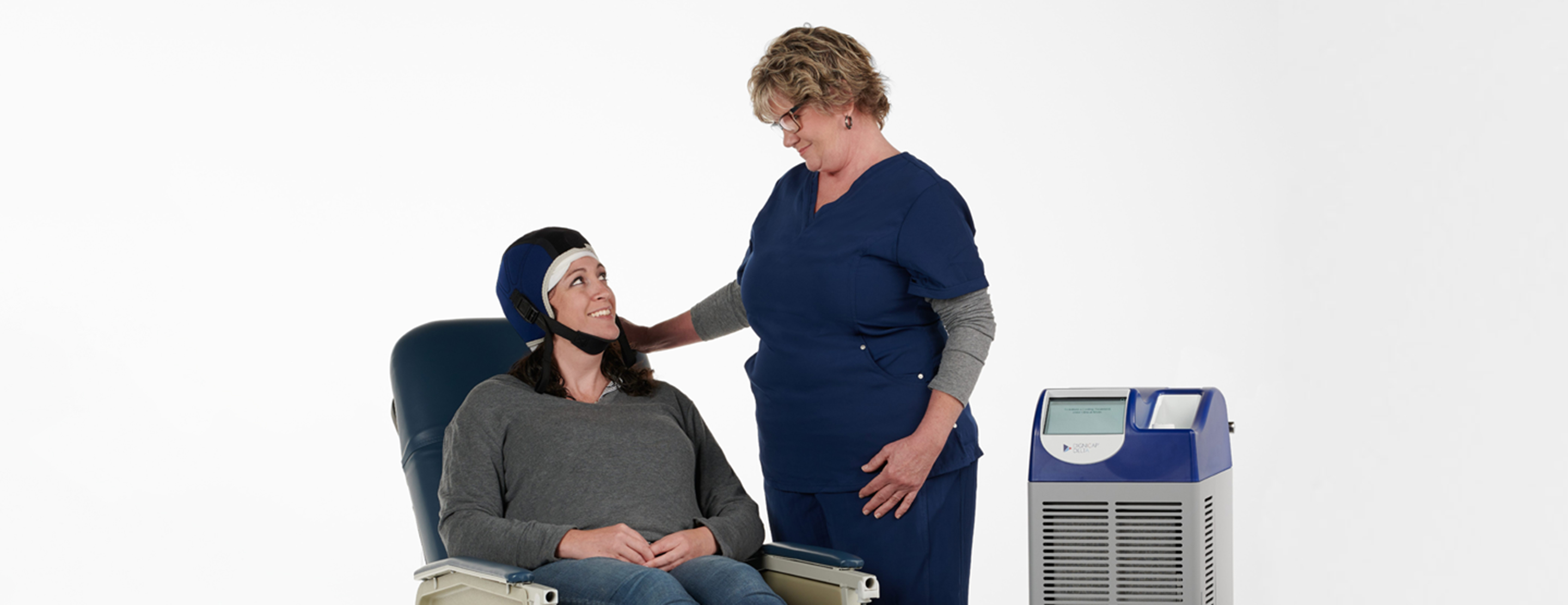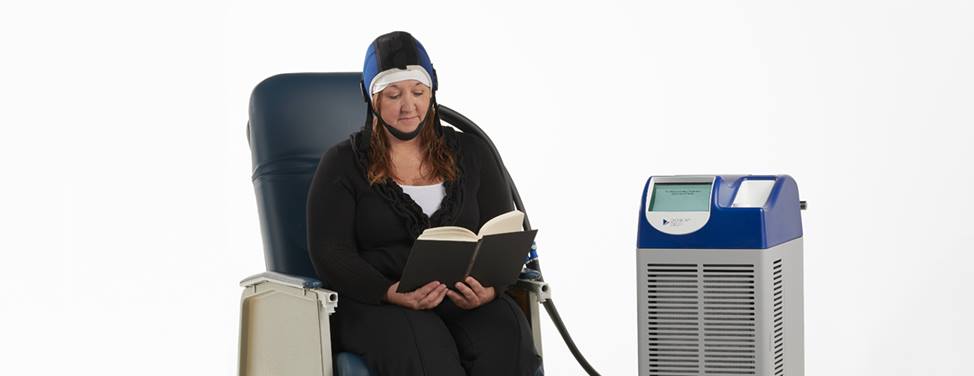We can support use of the DigniCap Scalp Cooling System at our Mission Bay, Mount Zion and Berkeley infusion centers. If you wish to use DigniCap during your chemotherapy treatments, please contact your oncologist's practice coordinator or visit the Dignitana Patient Support Center.

DigniCap at UCSF
Costs
- One-time payment: $250 to Dignitana for your DeltaKit (cooling unit, cooling wrap and thermal cap).
- Each chemotherapy infusion (up to eight treatments): $325. This breaks down as $275 to Dignitana for a DeltaCard, which allows use of the cooling machine, and $50 to UCSF (paid at the front desk of the infusion center) for UCSF assistance. You can pay with a credit card, debit card or cash.
- Each infusion after the initial eight: $50 to UCSF, paid at the time of treatment.
Use of the DigniCap system is not currently billable to insurance plans, and it won't appear on your UCSF bill.
We recommend calling your insurance company's customer support line to ask whether your scalp cooling treatments will be covered.
Getting your Dignicap system
To order and pay for your DeltaKit and DeltaCards, you need to set up an account through the myDigniCap online portal. Once you have created this account, remember your password, as you will sign back in to your account before every treatment in order to pay. There is no automatic billing feature, so you'll need to pay and sign consent before each treatment.
Make sure to place orders at least five business days before scheduled treatments. Otherwise, you may have to pay an extra fee for expedited delivery.
You must pay for the first eight DeltaCards; after that, the cards are free. After you've paid for your eighth card, please place a separate order for the number of cards you'll need to complete your treatment course. This way, you'll have all the cards you need and won't have to continue placing orders.
For any issues with placing orders or making payments, please contact Dignitana's patient support line by calling (877) 350-2150 or emailing [email protected].
What to expect on your infusion day
Wash your hair before going to appointments – if possible, on the morning of each scheduled chemo session. Your hair should be clean when you use a cold cap.
Cold caps can cause discomfort, such as headaches or brain freeze, so ask the infusion center staff whether you may take a low-dose pain reliever, such as ibuprofen or acetaminophen, before you start the cooling process. Read more about preparing for your treatment.
Bring the entire cold cap kit – cooling wrap, thermal cap, chin strap, headband, spray bottle and wet brush – to the infusion center with you. We don't supply spares of these items. If you arrive without your kit, you'll have to pay $250 for a new kit.
An infusion center staff member will seat you at a DigniCap machine and help you with preparations. Staff will spray your hair (having it wet helps with the cooling process) and then place the cap on your head. There will be 30 minutes of pre-cooling to prepare your hair prior to the start of your cancer treatment.
Once you start the cooling process, you can't be disconnected from the machine for longer than six minutes, so it's a good idea to use the restroom before beginning. Breaks of under six minutes are fine; just let a staff member know if you need a restroom break. Your caregiver can accompany you back and forth and inform staff when you're ready to be reconnected.
Be prepared to get cold! We have warm blankets and towels you can use, but electric blankets or other electric warming devices aren't allowed due to fire code restrictions.
After your infusion is done, you'll keep the cold cap on for a post-cooling period. This will last two to three hours, depending on your specific chemotherapy treatment. (Read about recommended post-cooling times.) Then the machine will be turned off, and you'll spend 10 to 15 minutes letting your hair get back to room temperature before you're disconnected from the machine and discharged.
UCSF Health medical specialists have reviewed this information. It is for educational purposes only and is not intended to replace the advice of your doctor or other health care provider. We encourage you to discuss any questions or concerns you may have with your provider.









